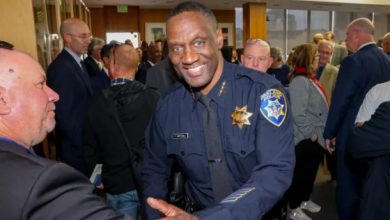Interview with Andrei Yaryha, Visionary Developer Behind MotoSpot: A Game-Changing App Enhancing Motorcycle Safety Worldwide
Andrei Yaryha is the Lead Mobile Developer at the Belarus Hi-Tech Park resident company MVP LLC, and the visionary behind an app that’s literally saving lives on the road. MotoSpot is a unique project built specifically for motorcyclists, although it is equally useful for couriers, cyclists, travelers, scooter owners, and even drivers. In short, it’s a mobile application that combines the functions of a social network, emergency response system, and navigation tool. MotoSpot addresses road safety issues on a global scale and has already been used by thousands of users. We spoke with Andrei via video call to learn how he came up with and developed a project unlike anything else in the world.
Andrei, many people refer to you as a guardian angel for motorcyclists. MotoSpot has revolutionized road safety. How did the idea come about?
Hello! As a motorcyclist myself, I know firsthand the risks our community faces, including high accident rates, delayed emergency response, and a lack of coordination among riders. Often, bikers end up in places that are hard to reach, even for emergency services. That’s how the concept of MotoSpot was born: a social network, safety service, and navigation system all in one mobile app. I wanted to create something socially impactful and protect those who need it most.
What sets MotoSpot apart from other solutions in the U.S. market?
It’s a cross-platform mobile app designed for everyone using two-wheeled transport. Unlike standard GPS apps or social platforms, MotoSpot brings together three core components. First is safety: users can instantly send an SOS signal in case of an accident, notifying their emergency contacts and nearby MotoSpot users. Second is community: the app allows users to create groups, organize rides, and share routes. Third is navigation and services: users can mark motorcycle-friendly locations, repair shops, fuel stations, and roadside assistance.
You developed the SOS feature, which is a real breakthrough. How does it work?
If a user is involved in a serious accident, they can send an SOS signal with verified and precise coordinates. The alert is instantly transmitted to nearby MotoSpot users, who can respond quickly and provide immediate assistance. We are also working on integrating the app with official emergency services to enable faster and more direct responses.
In medicine, there’s the so-called “golden hour”: if help arrives within the first 60 minutes, survival chances increase significantly.
There are also minor incidents like a small crash or running out of fuel. In such cases, calling 911 may not be necessary, but help is still needed. The SOS signal is transmitted to nearby MotoSpot users, who receive a guided route to the person in need. Sometimes multiple users respond, providing fast, community-driven assistance. This decentralized model helps expand access to assistance even in remote areas, while allowing emergency services to stay focused on truly critical situations.
To support this, we are developing automatic crash detection powered by machine learning and sensor data — including the accelerometer, gyroscope, microphone, barometer, and GPS — to identify critical incidents in real time.
That sounds similar to eCall systems in cars, but adapted for bikers. Is that right?
Exactly! But we’ve gone further. Our system engages not only the rider community but is also being developed with future integration of official emergency services in mind. This approach makes MotoSpot even more effective and unique. To this day, nothing like this has been created for motorcyclists. We are a one-of-a-kind project on the market.
Why did you focus so much on the community? What role does it play?
A huge one. Motorcyclists are a brotherhood. We gave them a tool to self-organize by planning rides, creating groups, sharing routes, and recommending services. Thanks to this, MotoSpot has become a living ecosystem.
The app now has about 50,000 users. That’s quite an impressive result. In which countries is MotoSpot actively used?
Right now, we’re expanding in Europe and the U.S. The U.S. actually accounts for over 59% of all app installations. Motorcycle fatality rates there are high, as motorcyclists are involved in 15% of all fatal road accidents. Our app aims to help reduce that number by empowering riders with fast community-based response and safety tools. In the U.S., we are actively working toward integration with official emergency response systems to maximize the app’s impact on public safety. MotoSpot is available on our website, the App Store, and Google Play.
It’s no secret that U.S. road infrastructure still isn’t very friendly to two-wheelers. How does the app address that issue?
Our product boosts the overall efficiency of road safety systems. For example, users can identify dangerous road sections, quickly find the nearest repair center or tow service. Motorcyclists can access essential services even in remote areas. And of course, the app helps prevent secondary accidents by creating a “safe zone” around the affected rider.
Your mobile development experience is impressive. What skills helped you deliver such a technically complex project?
I earned a solid education in mobile development, programming, server architecture, and information security at the Belarusian State University of Informatics and Radioelectronics, the country’s top tech university in the IT field. This foundation helped me build a stable, secure, and user-friendly service. I also completed Google Cybersecurity and IBM iOS & Android courses, and studied graphics and UX/UI design — all of which proved extremely helpful. My previous experience in crypto startups like Bitcoin Depot and RockItCoin taught me how to handle data and security systems effectively, both are essential for our project. When it comes to IT, I can do it all.
You have a unique background, successfully combining a tech career with a passion for motorcycles. You’re also a member of IEEE, one of the world’s most respected engineering organizations, and a Hackathon Raptors Fellowship member. How do you view this stage of your career?
Being part of such prestigious communities has been a significant milestone for me. It’s recognition of my work and dedication. It also gives me access to valuable knowledge, standards, and networking opportunities. I see it as a major step forward. I always try to expand my impact. I regularly attend professional conferences and forums. Last year, for example, I took part in the InfoQ Dev Summit in Boston, a two-day event focused on modern software development practices. Connecting with peers and exchanging ideas has been essential for my professional growth. And my biggest motivation is the belief that I’m capable of more.
What are your plans for the future of MotoSpot?
We have big ambitions. Right now, we’re working on a redesign, AI-based automatic crash detection, integration with towing services, and we’re actively seeking new investment. We’re also in talks to have MotoSpot included in national road safety programs in the U.S.
Thank you for the interview! We wish your project great success!
Thank you! MotoSpot has already helped riders in real situations, preventing accidents, connecting people in emergencies, and building a safety-first community on the road. But this is just the beginning. With every update, every new partnership, we’re shaping a future where motorcyclists everywhere feel safer, more connected, and truly supported.



